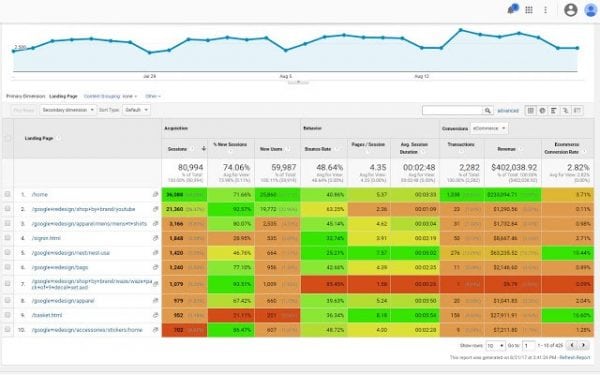Google Analytics is a powerful tool in its own right, but with the addition of further tools, our job as marketers or digital analysts can be made that bit easier.
There are a plethora of tools available on the internet that can help you, but we are going to focus on a select seven – the ones I think are the best.
The tools I mention in this post should help you out with the debugging of Google Analytics implementations and bring improvements to interpreting data and reporting.
Google Tag Assistant
The first extension is one that I use on an almost daily basis. I use it so much that I’m surprised when other colleagues don’t use it. This is my go-to tool and a starting point to assess if tracking codes have been installed correctly on pages and websites.
Google Tag Assistant tells you which Google Analytics codes and Google Tag Manager containers are present on your website. It also flags any errors and makes recommendations to improve implementation.
Other functionality includes the ability to record a session as you go through a website – as though you were a customer. Once you are done, you will be presented with a report that tells you what tags have fired on each page – making it easier to debug implementations.
You will be able to see if a tag has not fired, or if there is anything else wrong with your codes, allowing you to instantly validate, diagnose and troubleshoot issues.
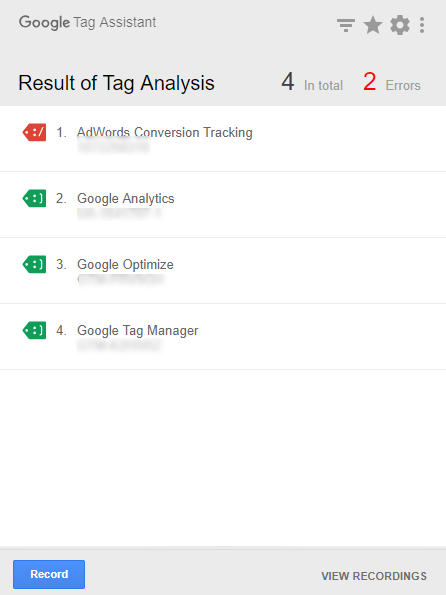
Google Analytics Debugger
Another staple that should sit within your analytics toolkit is the Google Analytics Debugger. This tool is great and works in conjunction with built-in Google developer tools.
Once enabled, the debugger sends data to your developer tools, allowing you to see what information is being sent to Google Analytics via the JavaScript console. You can see everything from events and tracking ID’s, to eCommerce data, (or lack of eCommerce data if your implementation is amiss), all extracted from one report.
These messages include error messages and warnings which can tell you when your analytics tracking code is set up incorrectly. In addition, it provides a detailed breakdown of each tracking beacon sent to Google Analytics.
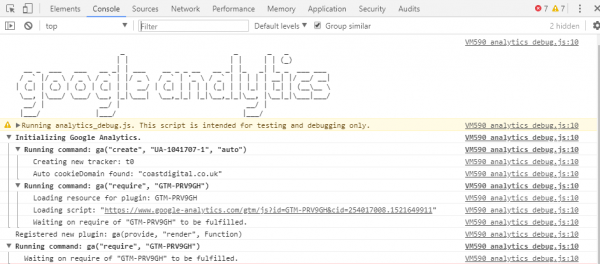
Ghostery
Ghostery utilises anti-tracking and advert blocking features, detecting tracking technologies and giving you the option to block them out.
This is not behaviour we advocate as marketers, but there is one key benefit that can help us in terms of Google Analytics tracking, and that is the ability to stop recording your data with Google Analytics.
It is best practice to filter out your companies IP address from Google Analytics to ensure the data is not effected by internal traffic.
Sometimes this becomes a problem when staff are on a dynamic IP address or they are not in the office and are on an external IP address. In these instances, the filter would not work. Ghostery’s ability to allow you to block Google Analytics tracking when out of the office will solve this problem.
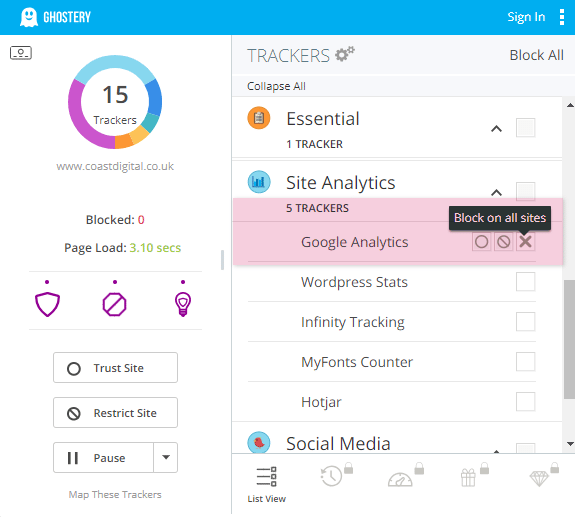
Redirect Path
This tool tells you how you got to a page and the redirects that have taken place – helping you to establish if your redirect implementations have gone to plan.
Correct redirects are vital and when they are not implemented correctly, it can cause issues with traffic sources being incorrectly recorded in Google Analytics – as well as other data being recorded, and UX/SEO issues such as unexpected content, 404 pages or http versions of https pages.
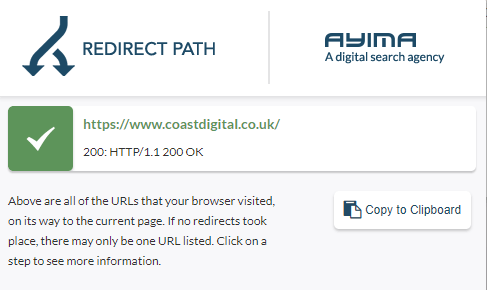
Regexer
Learn, build and test – although not a Google Analytics extension, Regexer is a superb tool that allows you to build and test your regular expressions.
Regex can be extremely useful in the manipulation of data, including for the following examples:
- Filtering data in reports
- Setting up goals
- Creating segments
The Regexer can help you test your regular expressions before you put them live. This will ensure you have full confidence before implementing them, whilst also helping you learn and develop new methodology with your segment creation.
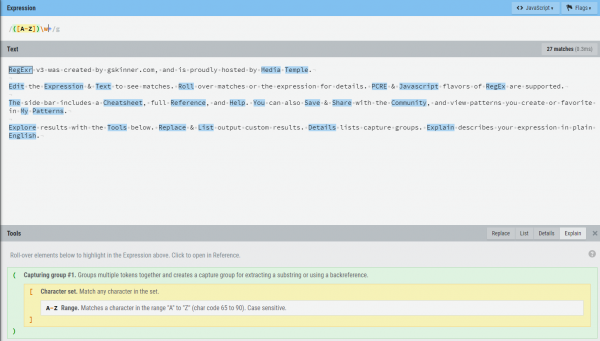
URL Builder
A staple for all marketers launching and tracking campaigns, URL Builder allows you to easily add campaign parameters to URLs, so you can track Custom Campaigns in Google Analytics.
This is something that everyone running marketing campaigns should be using via Analytics anyway, but there are still instances where custom campaigns can be tracked without the custom parameters – meaning you lose visibility in Google Analytics.
URL Builder helps avoid this issue whilst giving you control and flexibility with the data you’re looking to measure, through Custom Campaign tracking.
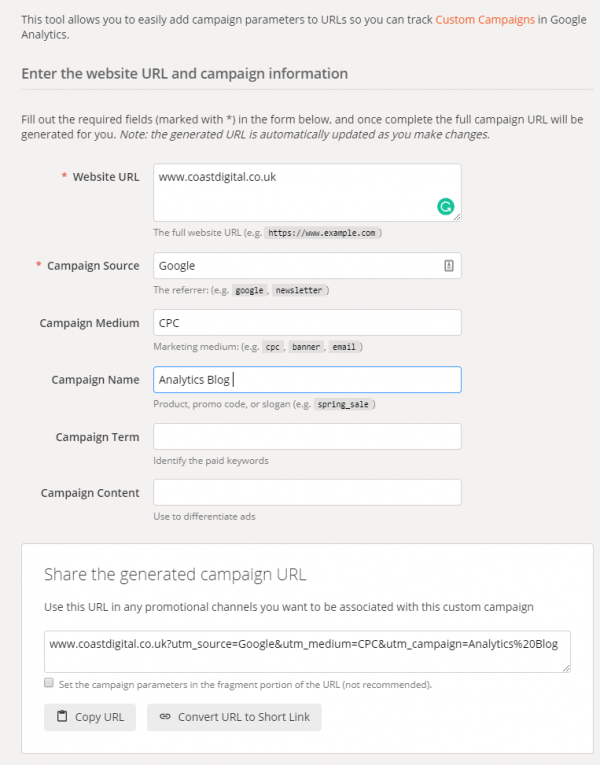
Da Vinci Tools
This a tool that I have recently stumbled across, but as soon as I used it, I immediately began recommending it to colleagues.
The add-on gives you a few more useful tweaks via the Google Analytics interface. My 2 favourite features at the moment are:
- Sticky header –This feature ensures that the top section of the website sticks to the top of the page.This is very useful when you are looking at very detailed, lengthy reports and you want to make changes to the date range or apply a segment. No longer do you have to scroll right to the top of the page, as the header remains in one place the whole time.
- Heatmaps –Now you have the ability to add user heatmaps as part of any report. The main benefit is that this allows you to analyse and spot user trends (particularly in relation to cursor movements and clicks on a page) with ease.
